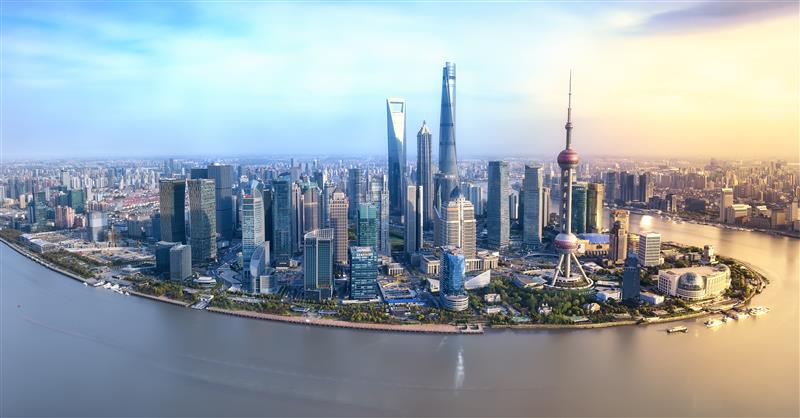Understanding China's recent stimulus measures
As we delve into China's latest economic stimulus, important questions arise about its nature and timing. After a week on the ground in China consisting of research and discussions with macroeconomic research houses, government advisers, data providers, industry experts, Financial Times journalists and executives from Chinese resource and steel companies, a consensus has emerged.
While the stimulus represents a positive move, significant challenges persist. A crisis of confidence looms and the government must stabilise the property market and support asset prices to revitalise economic transmission mechanisms.

This time, the focus of the stimulus is expected to favour consumption over commodities, given the current oversupply in the property market. The Chinese government's intervention is seen not to spur growth, but as an attempt to rescue the economy from a self-induced crisis. We anticipate that the upcoming National People’s Congress (NPC) meeting in November 2024 may fall short of expectations but expect more beneficial policies to emerge from the March 2025 session.
Genesis of the Stimulus
Through our research, it has become clear that the government is targeting both the wealthy elite and corrupt local officials. This approach aligns with President Xi Jinping's vision of "common prosperity," a principle he has frequently articulated, and one that has gained traction throughout his administration.
China's population can be divided into two groups: the wealthy, accounting for 10% of the population and 60% of total consumption, and the lower to middle class, comprising the remaining 90%. President Xi's policies have largely overlooked the wealthy minority, leading to direct actions against them. For instance, individuals are being asked to return bonuses from the past five years and pay cuts of up to 20% have been common in overcompensated industries.
These measures, combined with declining property prices and historically low stock market levels, have triggered a significant crisis of confidence that peaked in August and September of this year. As a result, the government enacted emergency stimulus measures that were widely covered in the media, though specifics were lacking due to the urgent nature of the response.
Acknowledging its previous focus on the affluent, the government is now working to restore confidence by addressing three critical areas:
- Local Government Debt
- Excess Property Inventory
- Low Birth Rates
We expect the NPC meeting to announce a stimulus package totalling 3 trillion RMB, with 2 trillion RMB allocated for local government debt swaps and 1 trillion RMB for bank equity injections. This initiative may not satisfy Western investors seeking substantial actions; instead, an incremental policy rollout is anticipated over the coming years, with the March 2025 NPC meeting likely to unveil more extensive measures.
On-the-ground feedback reveals an awareness of the stimulus as a step toward recovery, yet confusion remains about its implications. Local governments are empowered to purchase excess property inventory but have hesitated due to concerns over dealing with unscrupulous developers. We foresee the implementation of safeguards to facilitate these purchases in the future.
Addressing Birth Rates
In Tier 1 cities, young, emancipated women show little interest in having children, a trend unlikely to change with incentives. However, feedback suggests that incentive payments could be effective in Tier 2 to 4 cities. Therefore, we anticipate announcements regarding cash payments or subsidies aimed at increasing birth rates, likely occurring in December or during the March 2025 NPC meeting.
Insights on the Property Market
We predict further local government debt swaps to enable authorities to acquire excess housing inventory, with announcements expected this Friday and program extensions anticipated in the March 2025 NPC meeting. Before new housing projects can resume, the government must address the 24 million unoccupied units. The general sentiment is that new construction will likely bottom out in the second half of 2025 or possibly into 2026. Recent relaxations in purchasing requirements have led to a 30% surge in housing sales in October, primarily driven by pent-up demand from Tier 1 buyers eager for favourable conditions. However, a moderation in weekly sales raises questions about the sustainability of this uptick, or if it simply reflects a temporary release of demand.
PBOC's Significant Shift
In an unprecedented move, the People's Bank of China (PBOC) is actively promoting equity purchases. It has committed 500 billion RMB for equity acquisitions through repurchase agreement (repo) facilities, with plans for additional funding if necessary. This strategy can be seen as a form of quantitative easing. The PBOC recognises the need to enhance asset prices to spur consumption, leading us to believe that the resulting wealth effect will positively impact consumer spending in 2025. We expect to see a preference for consumer-focused stocks over commodities, especially as the government prioritises clearing housing inventory.
Trading Opportunities
Tactically, the November NPC may underwhelm markets, presenting a potential buying opportunity as the Chinese government shows genuine intent to stabilise the economy. With incremental policy changes anticipated, trading opportunities may arise over the next 12-months as discussions persist regarding the adequacy and speed of governmental actions.
2 topics
1 stock mentioned

